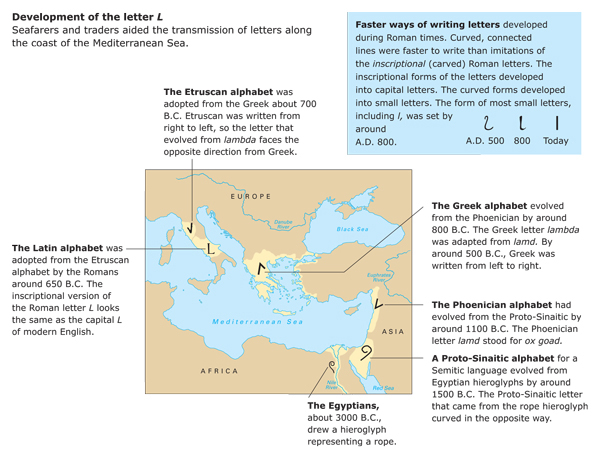L is the 12th letter of the alphabet used for the modern English language. The letter L is also used in a number of other languages, including French, German, Italian, and Spanish.

Alone or in pairs, L represents its sound in such words as live, rely, April, belly, and fill. It is silent in such words as would, salmon, and half.
Scholars believe that L evolved from an Egyptian hieroglyph (pictorial symbol) that represented a rope. Hieroglyphs were adapted to be used for a Semitic language by around 1500 B.C. The alphabet for this Semitic language—the earliest known alphabet—is called Proto-Siniatic. By 1100 B.C., an alphabet for another Semitic language, Phoenician, had evolved from Proto-Sinaitic. See Semitic languages .
The Phoenician letter that can be traced to the Egyptian rope hieroglyph is the 12th letter of the Phoenician alphabet, lamd. The Phoenicians used the letter to represent the beginning L sound of lamd, which was their word for an ox goad—a curved stick used to herd cattle. Around 800 B.C., when the Greeks adapted lamd to their letter lambda, they formed it something like an upside-down V. The Etruscans adopted the Greek alphabet about 700 B.C., and they wrote the letter that evolved from lambda something like a backward capital L. The Romans adopted the letter from the Etruscans by around 650 B.C. The letter was reversed from Etruscan in the Latin alphabet, as Latin was written in the opposite direction, from left to right.

See also Alphabet .
